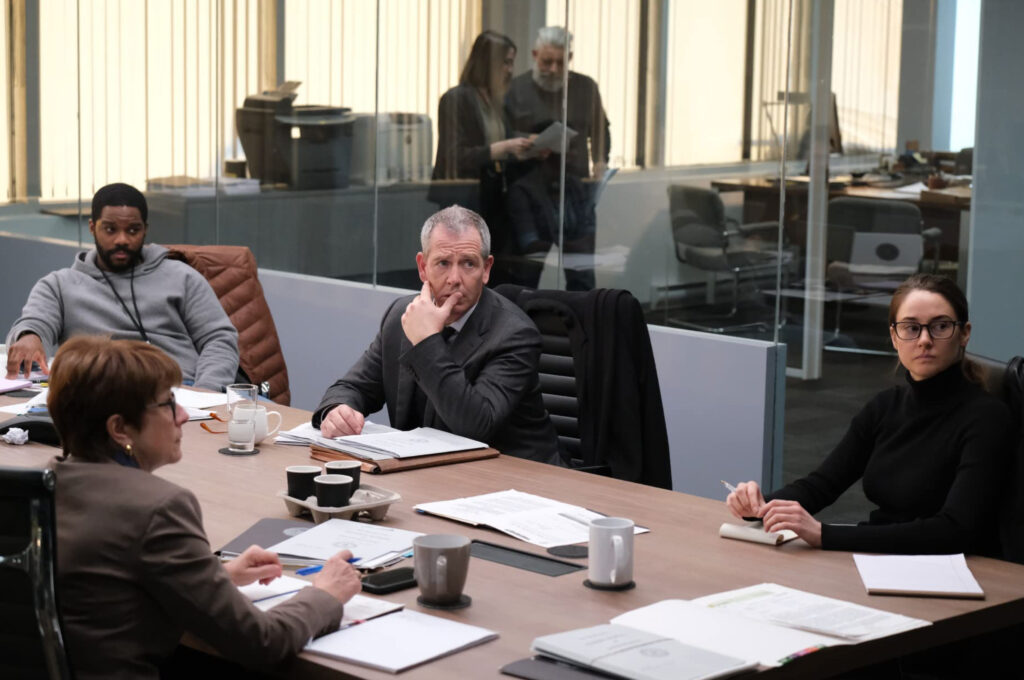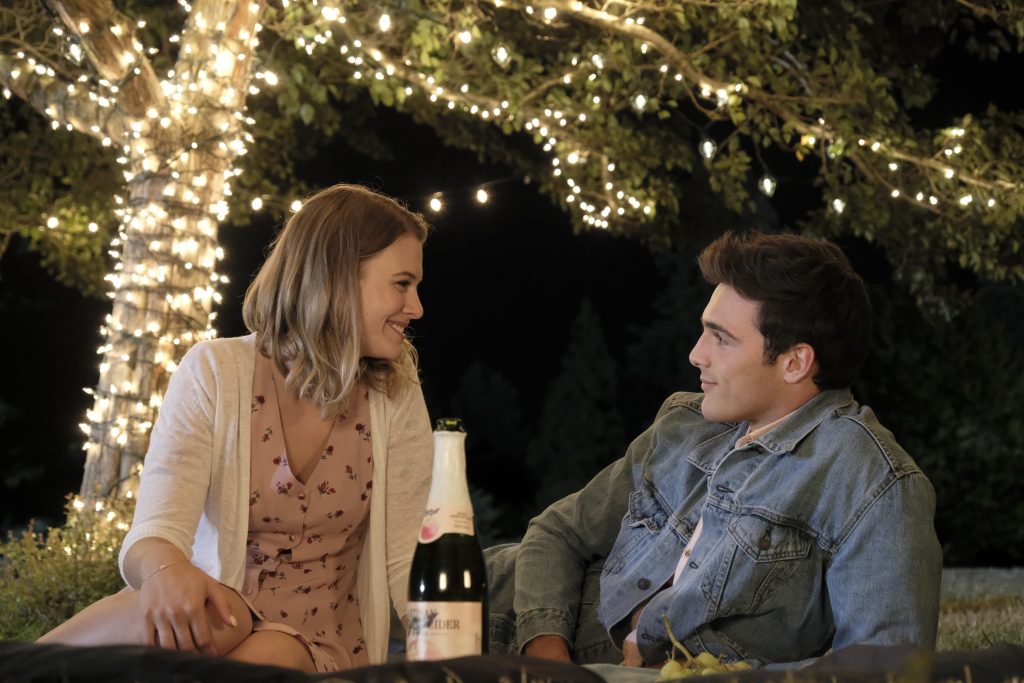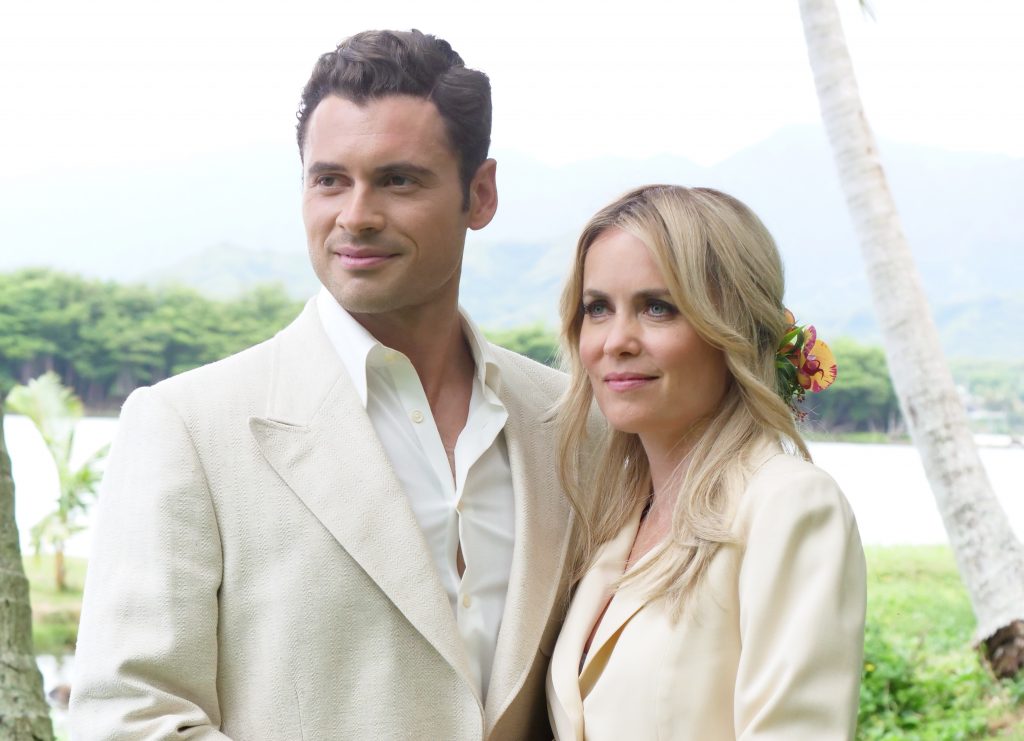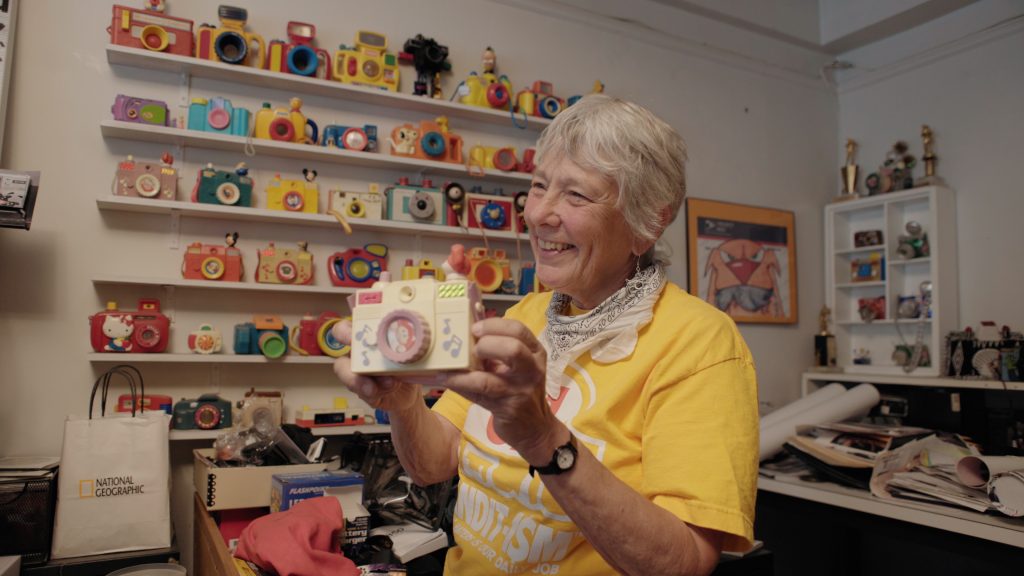May 5, 2023
by Carla Hay

Directed by Damián Szifron
Culture Representation: Taking place mostly in Baltimore, the dramatic film “To Catch a Killer” features a predominantly white cast of characters (with some Asians, Latinos and African Americans) representing the working-class and middle-class.
Culture Clash: A cynical FBI agent teams up with a Baltimore police officer with a troubled past in an investigation to find an elusive mass murderer.
Culture Audience: “To Catch a Killer” will appeal primarily to people who are fans of procedural crime dramas and the movie’s headliners, but the move lacks the realism that would make it a credible crime story.

“To Catch a Killer” starts with the far-fetched concept that an experienced FBI agent would rely heavily on an inexperienced city police officer to help capture a mass murderer. The plot all goes downhill from there. Although the cast members try to make this drama believable, and there are some suspenseful moments, the movie is undone by a weak screenplay that has too many plot holes and unrealistic depictions of an investigation of this magnitude.
Directed by Damián Szifron (who co-wrote the “To Catch a Killer” screenplay with Jonathan Wakeham), “To Catch a Killer” takes place mostly in Baltimore. The movie (which was formerly titled “Misanthrope” and was actually filmed in Montreal) opens with a scene that takes place in Baltimore on New Year’s Eve. Party revelers who are on the roof and on balconies at a high-rise hotel are suddenly gunned down by an unseen sniper at a nearby hotel. In total, there are 29 murder victims.
It’s a scene reminiscent of the real-life horrific tragedy in 2017, when a sniper at a hotel murdered 60 people and wounded more than 400 people at the outdoor Route 91 Harvest music festival in Las Vegas. This real-life tragedy is mentioned in “To Catch a Killer” when law enforcement officials arrive at the bloodbath crime scene to investigate. It’s probably the closest thing to realism that the movie gets.
The crime scene investigators find out too late that the sniper left behind a bomb in the 17th floor hotel suite, where the unknown sniper was, but fled the scene before law enforcement officials could get there. The bomb explodes, destroying a lot of possible evidence. It’s later mentioned that even if there had been no mob, the killer didn’t leave any fingerprints or DNA at the crime scene. However, witnesses who saw who was in the hotel suite say that the gunman was a white male who was alone.
One of the Baltimore police officers on the scene is Eleanor Falco (played by Shailene Woodley), who is one of the cops who goes into the hotel suite after the bomb explosion. By the time Eleanor gets there, the hotel suite is filled with debris and smoke. Eleanor hallucinates that she falls out of window in this hotel suite. She thinks she’s fallen on the sidewalk. Instead, she wakes up on a floor of the hotel suite, where a co-worker tells Eleanor that she has fainted.
Later, Eleanor gets reprimanded by a supervisor for not wearing a gas mask when she knew that she was walking to a place that had just been bombed. Eleanor is generally not respected by her mostly male co-workers. This animosity toward Eleanor is because she’s a woman, and partly because she’s a loner type in a job that requires that she work with a partner and as part of a team. Eleanor is almost never with a cop partner when she responds to a dangerous crime scene. It’s one of the many reasons why “To Catch a Killer” looks so phony.
The FBI agent who’s been put in charge of the investigation is Geoffrey Lammark (played by Ben Mendelsohn), a gruff know-it-all who thinks he’s the only person who has the leadership skills to find the killer. During a meeting with Baltimore police officials and FBI agents, Geoffrey gets a briefing from a criminal profiler, who starts rattling off the probable personality traits and demographics of this mysterious mass murderer. “He’s not a type. He’s a person,” says Geoffrey abruptly in response.
Eleanor speaks up in the meeting and refutes the profiler’s theory that the murderer is out for revenge. Eleanor says she thinks the murderer’s motive is relief. Geoffrey is intrigued by this observation. And so, the next day, Eleanor is called into meeting with Geoffrey, who decides after this one conversation that he’s going to consult with Eleanor on how to catch this killer.
It’s explained rather ludicrously in the movie that Geoffrey made this decision because he did a background check on Eleanor and found out that she has a lot of dysfunctional personality traits that are similar to a serial killer. Eleanor has a lot of violent anger issues, dating back to when she was a child. She says that something happened to her when she was 12 that motivated her to go into law enforcement for “protection” against herself.
Eleanor is also a recovering drug addict who has attempted suicide more than once. Of course, these experiences will not automatically turn someone into a killer of other people, but Geoffrey thinks that Eleanor would know better than any other investigator on team how the mind of a serial killer works. It doesn’t take long for Geoffrey to get some backlash for choosing Eleanor to be the Baltimore Police Department’s liaison for the FBI in this investigation. The Baltimore Police Department’s chief Karl Jackson (played by Mark Camacho) and other high-ranking employees in the department naturally feel insulted that they were passed over for this liaison job.
It’s the first time that Eleanor has worked on a mass-murderer investigation. Eleanor applied to the FBI Academy eight years about she was rejected because of her mental health issues. The FBI Academy personality test results found Eleanor to be “aggressive, vindictive and antisocial.” It’s eventually revealed what happened in Eleanor’s childhood that most likely affected her mental health at an early age.
Geofrrey knows that Eleanor will eagerly work with him because she hopes it might help if she ever decides to try out for the FBI Academy again. And he’s right about Eleanor wanting to help him. What Geoffrey doesn’t count on is that Eleanor will outsmart him in many aspects of this investigation.
“To Catch a Killer” moments of suspense often come a crashing halt when the movie awkwardly tries to balance the action scenes with the behind-the-scene politics of this investigation. Geoffrey’s boss Irene Michkin (played by Dawn Lambing) is skeptical from the beginning that Eleanor will make a good liaison. Irene thinks that Eleanor is not mentally stable enough for the job. Geoffrey and Irene predictably clash with each other in a battle of egos.
FBI agent Jack McKenzie (played by Jovan Adepo) is sometimes caught in the middle between the feuding of Geoffrey and Irene, but Jack generally goes along with what Geoffrey wants, because Jack has to interact more with Geoffrey than with Irene. Another person who gets into conflicts with Geoffrey is a colleague from the FBI named Frank Graber (played by Richard Zeman), who is in a power struggle with Geoffrey. Someone else who isnt a fan of Geoffrey is Baltimore’s mayor Jesse Capleton (played by Nick Walker), who resists Geoffrey’s recommendations to lock down the city after another mass murder, because Jesse thinks it will cause more panic than necessary and disrupt the city’s economy.
The mass murderer strikes again and again and again. In one horribly staged scene, the killer shoots people at a shopping mall and then nonchalantly bombs many of the law enforcement officials who show up in response. There are numerous suspects and persons of interest who are investigated, including a right-wing, anti-government extremist named David Lee Hicks (played by Patrick Labbé), a contractor named Dean Possey (played by Ralph Ineson) and a contractor business owner named Rodney Lang (played by Darcy Laurie).
A TV talk show host named Jimmy Kittridge affects the investigation when he makes incendiary comments about the killer and dares the killer to call him on Jimmy’s live talk show. “To Catch a Killer” could have made an interesting observation about how the media can help or hinder an investigation. Instead, the media angle to the story is used in a lazily conceived plot development that further lowers the movie’s already low credibility.
The performances in “To Catch a Killer” aren’t terrible, but they aren’t very convincing either. Woodley is just not believable as an emotionally hardened police officer who is supposed to have extraordinary perception about a serial killer’s mind. It just looks like she’s playing dress-up as a cop. Half of the time, Woodley’s acting is very wooden and stiff, which seems to be her attempt at trying to look “tough.”
Mendelsohn fares slightly better as a jaded and arrogant FBI agent, but for a guy who thinks he’s so smart, Geoffrey sure makes a lot of dumb mistakes. And some of those mistakes are deadly. Eleanor and Geoffrey have some personal bonding outside of their jobs when Geoffrey invites her to his home to have dinner with Geoffrey and his husband Gavin (played by Michael Cram), who has his own theories about who the killer is.
“To Catch a Killer” falls completely off the rails in the last 20 minutes, when the movie tries to cram in a not-very-believable conclusion of the investigation. “To Catch a Killer” might get some comparisons to the Oscar-winning 1991 serial-killer mystery thriller “The Silence of the Lambs,” but it’s like comparing junk food to a gourmet meal. Both movies also have very different female protagonists and how they do their investigating. “To Catch a Killer” (unlike “The Silence of the Lambs”) is mostly forgettable, often boring, and definitely won’t be nominated for any major awards.
Vertical released “To Catch a Killer” in select U.S. cinemas on April 21, 2023. The movie will be released on digital and VOD on May 16, 2023. “To Catch a Killer” will be released on Blu-ray and DVD on July 11, 2023.






